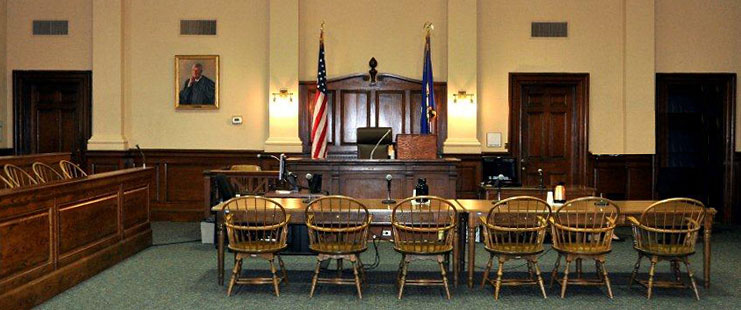Built in 1784-86, the New London County Courthouse replaced a similar structure that was burned at the end of the American Revolution in the fires set by Benedict Arnold
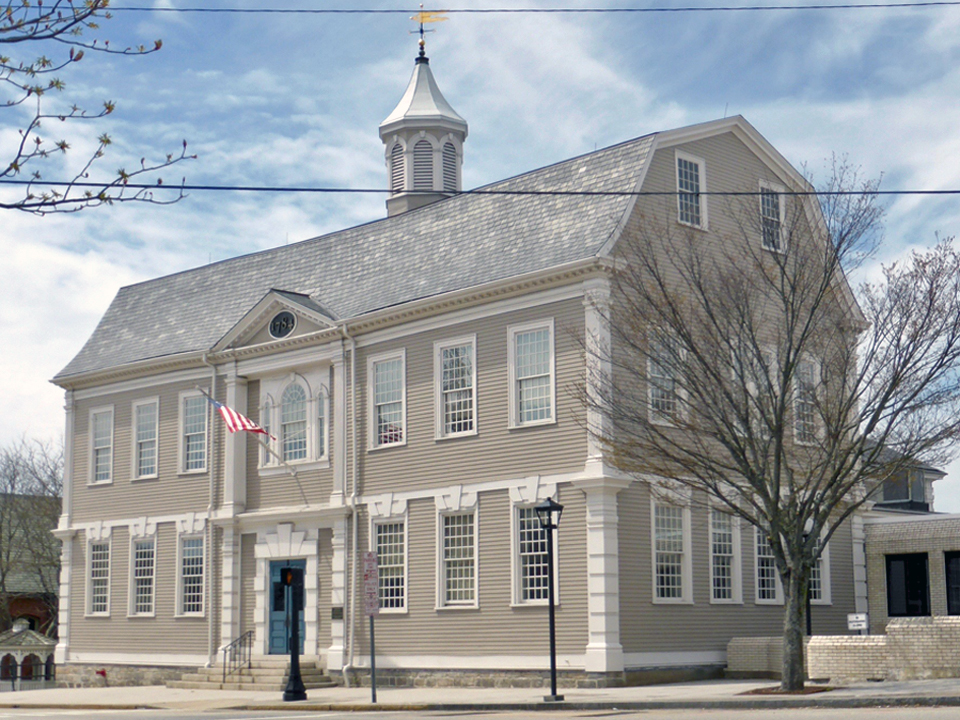
Perched at the junction of State Street and Huntington Street in downtown New London, the 2½ story wood frame structure topped by a gambral roof and octagonal cupola stands as Connecticut’s oldest courthouse – Offering a commanding view of the city that extends all the way to the harbor waters gently lapping against the State Pier a ¼ mile away!
Other distinctive architectural features include the building’s Palladian window and fluted pilasters. A Master Joiner from Lebanon, CT by the name of Isaac Fitch is credited with the historic design.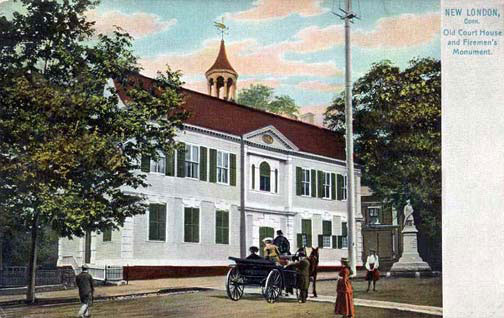
Initially the building served as both a courthouse and the New London town hall.
In 1909, a rear addition was designed and built by Dudley St. Claire Donnelly. Later, in 1982, the architectural firm of Hirsch and Persch constructed a large modern addition.
The building was added to the National Register of Historic Places in 1970.
Historic significance
As Long Island Sound’s most vital deep-water harbor – New London, CT has played a key role in the nation’s early history – and served as a transportation hub through which passed many key figures and personalities.
It is therefore not a surprise that founding father, Patrick Henry, known for his famous declaration “Give me liberty, or give me death!” had once argued cases here in New London. And American Statesman Daniel Webster spoke here in praise of the U.S. Constitution.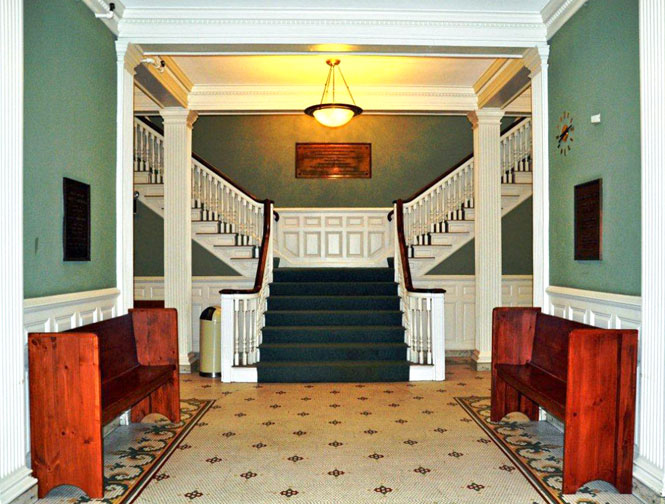
Among its variety of uses, the courthouse was also known to function as a Sunday School where Matilda Wright taught children of the poor, who were not welcome in area churches.
In the late 1790’s, the courthouse served as a makeshift hospital during the Yellow Fever epidemic of 1798.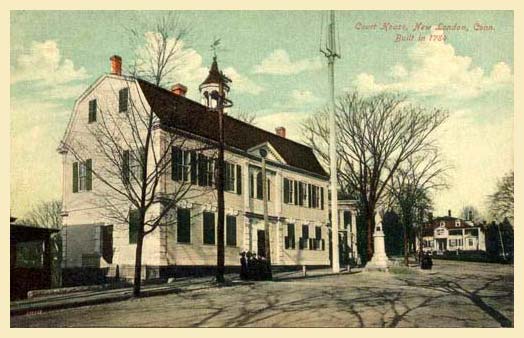
At the conclusion of the War of 1812, a gala ball was held in the courthouse to celebrate the lifting of the New London blockade.
During the American Civil War, the Union Army used the building as a recruiting center. For more than two centuries the historic New London Courthouse has served as a central location for town meetings and civic affairs alike.